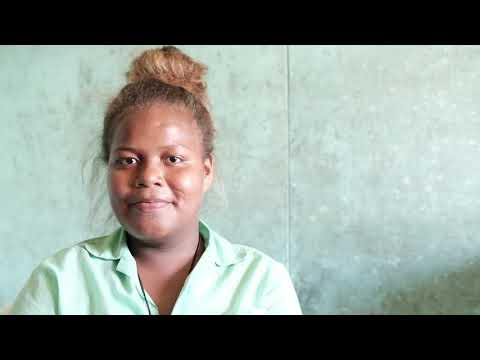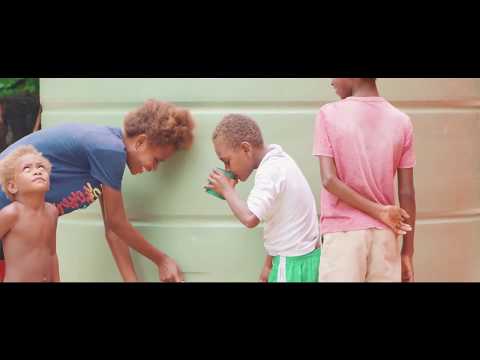
Photo:
The impacts of climate change, particularly sea-level rise and pronounced droughts have severe consequences on water and sanitation in the country.
The areas which are most vulnerable to sea-level rise are low-lying islands, atolls and flat deltaic regions at the mouth of larger rivers. Intrusion of salt water from rise in sea level has affected groundwater resources, especially freshwater aquifers (lens) in small atolls and low-lying islands that rely on rainfall or groundwater for their freshwater supply. Droughts have severely affected water supplies and have also damaged crops and livelihoods.
Likewise, climate-related impacts on the quality and quantity of water has a gender dimension; in the context of the ethnic tensions, the safety and security of women and girls are compromised as they need to travel further to collect water, also leading to less time for other activities.
This project (2014 - 2019) focused on improving the resilience of water resources to the impacts of climate change, in order to improve health, sanitation and quality of life, and sustain livelihoods in target vulnerable areas.
- Community
- National Governments
Rural and township communities of the Solomon Islands in 6 provinces: Gizo, Taro, Tingoa, Ferafalu, Tuwo, and Santa Catalina.
- Ministry of Mines, Energy and Rural Electrification, Solomon Islands
- United Nations Development Programme (UNDP)
- Global Environment Facility (GEF)
Expected outcomes
Championed by the Government of the Solomon Islands through the Ministry of Mines, Energy and Rural Electrification (MMERE) Water Resources Division (WRD) in partnership with Ministry of Environment, Climate Change, Disaster Management and Meteorology (MECDM), and other line ministries, SIWSAP activities are designed to ensure access to safe and affordable drinking water and increase reliability and quality of water supplies in targeted areas. Longer-term project measures are working to integrate climate-resilient water management in policy and development frameworks; encourage investments in cost-effective and adaptive water management technologies; and improve governance and knowledge management for climate change adaptation in the water sector at the local and national levels.
Based on the LDCF resources requested and the scope of the climate change adaptation measures, the project will cover work in 6 pilot sites. On a national scale there are a number of benefits that this project will contribute to.
- More than 70% of the national population i.e. more than 360,000 people benefit from communal water systems and natural water sources and do not rely on government managed water supply systems. Many of these supply systems are dependent on water catchments and underground aquifers aquifers that are very sensitive to the hydrological cycle and its disturbances, most of which are related to climate change. Lessons from the project could be multiplied for the benefit of this population.
- Improvements to water supply will also result in more people having access to proper sanitation facilities, potentially reduce prevalence of disease and reduced costs to the people and to government’s social services
- UNDP estimates that water supply investment has an economic return of $4.4 to $1 while investment in sanitation has a return of $9.1 to $1. Some of the multiplier effects of investing in water and sanitation include; healthy workers, savings on medicines, bottled water not required, boost to agriculture and healthy tourists
- Increasing preparedness and enhancing resilience of the water sector to extreme events can potentially reduce the cost to government for disaster relief. Over the past few years flooding, king tides, excessive rainfall and storm surges have rendered rural locations and communities as disaster areas with the frequency of calls for disaster relief assistance from the national government reaching levels never before experienced in the country since it attained political independence in 1978
Outcome 1: Integrate water conservation and sustainable water resources management in all sectors and communities.
The outputs include: construction of village/community water tanks; construction of water reservoirs for institutional and residential areas; upgrading of existing reservoirs, protective structures/access roads; promote/build household rainwater harvesting; construction of strategic storage water reserve tank; engineered or “climate proofed” water reservoirs; develop and implement Water Use efficiency Plan; raise awareness for water conservation.
Outcome 2: Incorporate climate change adaptation strategies into the guidelines and criteria for design and construction of appropriate water infrastructure in vulnerable areas.
The outputs include: guidelines for development of water supply in rural areas developed; inventory of POPs and adequate storage and leakage prevention conducted; good practice guidance for pesticide storage and use, and application developed and used; drought and its effect on water distribution in rural areas assessed; rainwater harvesting technologies developed and used.
Outcome 3: Increased reliability and quality of water supply to all sectors and communities
The outputs include: capacity of water supply increased; water reticulation and distribution systems improved and where necessary constructed; arable land improved and rehabilitated; sustainable use of water on commercial agriculture land; build appropriate low-technology irrigation system for farmers; diversification food crops with a focus on high-yielding crop varieties promoted; promote water conservation and water use efficiency; prevent land-based pollution.
Outcome 4: Enhanced institutional and legal framework for water resources management
The outputs include: individual and institutional capacity for sustainable water management built and/or enhanced; water resources sector policy developed and implemented; water resources sector legislation developed and adopted; water sector plans and programmes developed and implemented.







